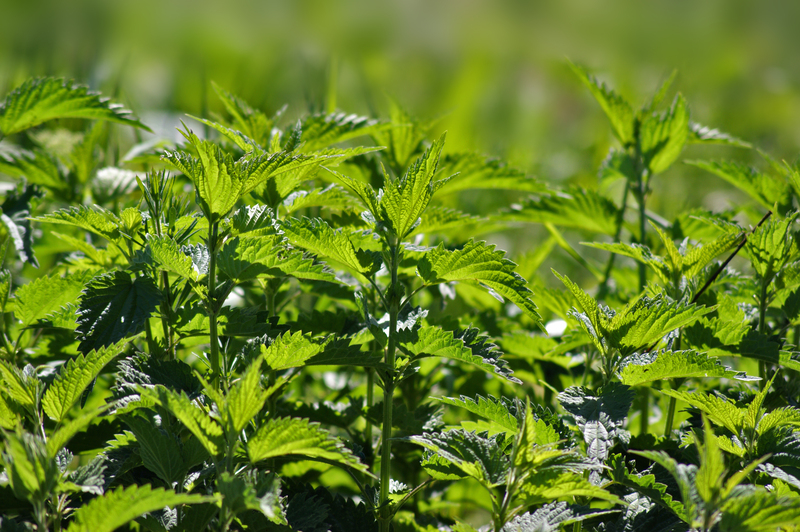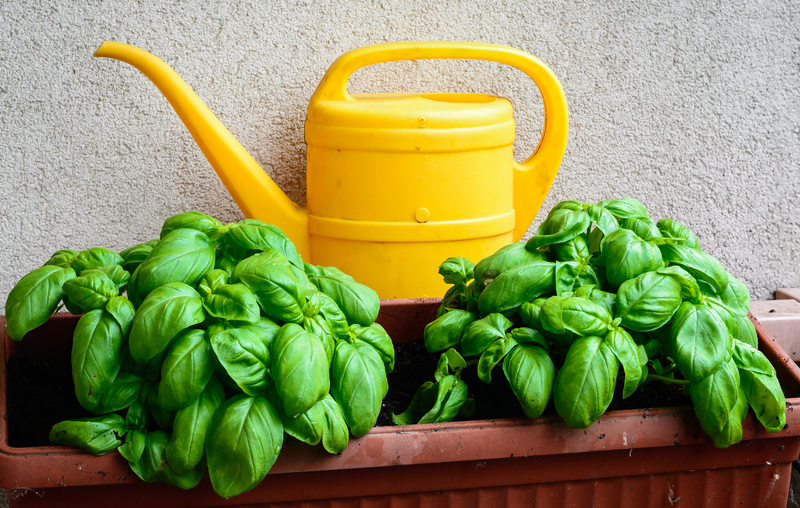Mastering the Basics and Benefits of Container Gardening
Posted on 19/09/2025
Mastering the Basics and Benefits of Container Gardening
Container gardening has surged in popularity as an accessible and versatile way to grow plants, herbs, flowers, and even vegetables. This approach is perfect for anyone who wants an attractive and productive garden but has limited space or challenging soil conditions. In this comprehensive guide, we'll walk you through mastering the basics and benefits of container gardening so you can unlock the joys of a flourishing green oasis wherever you live.
What is Container Gardening?
At its core, container gardening involves growing plants in pots or other containers instead of planting them directly in the ground. Whether it's a collection of colorful pots on a city balcony, window boxes bursting with fragrant herbs, or large tubs bearing tomato plants on a patio, container gardens come in all shapes and sizes.
Why Container Gardens are So Popular
- Flexibility: Move your plants any time to capture sun, avoid pests, or redecorate your space.
- Accessibility: Gardeners with limited mobility or no yard can easily participate.
- Versatility: Grow flowers, herbs, vegetables, even small fruit trees.
- Season Extension: Bring containers indoors or cover them to protect from frost or harsh weather.
- Pest Control: Isolate plants to better manage problems and reduce disease spread.
- Creative Expression: Experiment with artful arrangements, colors, and textures.

The Basics of Container Gardening
Before you fill your patio with pots, mastering the basics of container gardening will set you up for success. Here's what you need to consider:
1. Choosing the Right Container
- Size Matters: *Plants need space for roots to grow.* Large plants or vegetables like tomatoes require bigger pots (at least 5 gallons), while herbs and succulents thrive in smaller ones.
- Material: Options include terracotta, ceramic, plastic, metal, and wood. Terracotta is classic and breathes well but can dry out fast; plastic is lightweight and retains moisture; wooden containers are stylish but may need lining to avoid rot.
- Drainage: Proper drainage is crucial. Ensure your pot has holes in the bottom to prevent waterlogging, which leads to root rot.
2. Choosing the Best Soil for Containers
- Potting Mix: Use a high-quality potting mix, not garden soil. Potting soils offer better drainage, aeration, and fertility for container-grown plants.
- Moisture Retention: Some mixes include peat, coconut coir, or vermiculite to help retain water without becoming soggy.
- Fertilizer: Most potting mixes contain a starter fertilizer, but container gardens need regular feeding, as nutrients leach out with frequent watering.
3. Selecting Plants for Your Container Garden
- Location: Observe how much sun your space receives. Leafy greens and ferns prefer shade; tomatoes, peppers, and most annual flowers require full sun.
- Climate: Choose varieties that match your local conditions--drought-tolerant for dry climates, humidity-lovers for moist areas.
- Mix and Match: Combine thrillers (upright, eye-catching plants), fillers (mounding plants), and spillers (trailing plants) for beautiful, layered containers.
- Companion Planting: Group plants with similar water and light needs to make maintenance easier.
Key Steps for Planting a Container Garden
- Prepare Your Container: Clean thoroughly; check for proper drainage holes.
- Add Potting Mix: Fill halfway with potting mix. Tap gently to settle but avoid compacting.
- Arrange Plants: Loosen roots if pot-bound. Position tallest plants in the center or back, then fillers, then spillers at the edge.
- Fill and Water: Add more mix around roots until covered. Water slowly until evenly moist and water drains from the bottom.
- Mulch (Optional): Add a thin layer of mulch (bark chips, pebbles) to retain moisture and suppress weeds.
Essential Care Tips for Container Plants
To keep your container garden thriving:
- Watering: Check containers daily. Water when soil's top inch is dry. During hot spells, pots may need watering twice a day. Avoid overwatering as much as underwatering.
- Feeding: Nutrients leach out quickly in pots. Use a diluted liquid or slow-release fertilizer every 2-4 weeks, tailored to your plants' needs.
- Pruning: Pinch back or deadhead flowers, trim herbs, and remove yellowing leaves to encourage vigorous growth.
- Pest and Disease Management: Keep an eye out for pests. Treat problems early using organic or chemical solutions as appropriate.
- Sunlight: Rotate pots regularly for even sun exposure and growth.
- Winter Protection: Tender plants can be overwintered indoors, or pots insulated/mulched to prevent roots freezing outdoors.
The Many Benefits of Container Gardening
The beauty of container gardening is in its multitude of advantages. Here's why so many people are adopting this method:
1. Perfect for Small Spaces
- Urban dwellers: Balcony, patio, rooftop, or windowsill--any spot bathed in sunlight can be a productive container garden.
- Renters: Move your green investments from home to home since container gardens are portable.
- No yard? No problem! Enhance your living space with lush containers, even indoors near bright windows.
2. Creative and Decorative Possibilities
- Personalize your style: Choose pots in various shapes, sizes, and colors. Arrange different plant varieties for a visually striking impact.
- Seasonal swaps: Rotate in spring bulbs, fall mums, or winter evergreens to match the seasons.
- Edible and ornamental: Mix herbs, vegetables, and flowers for beautiful, practical displays.
3. Health and Happiness Benefits
- Stress reduction: Gardening activities lower stress and improve mood through connection with nature.
- Fresh food: Homegrown herbs, tomatoes, or lettuce are fresher, tastier, and more nutritious than store-bought.
- Engagement: Gardening in containers is accessible across ages and abilities, fostering intergenerational participation and joy.
4. Easier Pest and Disease Control
- Isolate problems: Sick or infested plants can be quickly removed from your collection, minimizing risk to others.
- Fewer soil-borne issues: Using sterile potting mix reduces exposure to many pests or diseases rooted in ground soil.
5. Improved Accessibility
- No heavy digging: Containers are ideal for people with limited strength or mobility.
- Height advantage: Raised pots or stands eliminate stooping and bending, which is easier on the back and joints.
Best Plants for Successful Container Gardening
If you're new to container gardening, start with plants known for thriving in pots:
Popular Edibles
- Herbs: Basil, parsley, thyme, cilantro, mint, chives, rosemary
- Vegetables: Cherry tomatoes, lettuce, spinach, radishes, peppers, bush beans, dwarf carrots
- Fruits: Strawberries, dwarf blueberries, small citrus trees (lemons, limes)
Top Decorative Choices
- Annuals: Petunias, marigolds, impatiens, geraniums, zinnias
- Perennials: Hostas, coral bells, daylilies, lavender
- Indoor options: Snake plant, pothos, peace lily, succulents, cacti
Common Challenges in Container Gardening (and How to Solve Them)
- Over or Underwatering: Pots dry out faster than ground soil. – Solution: Regularly check soil moisture; consider self-watering planters or group pots together to conserve humidity.
- Root Crowding: Plant roots will eventually fill their space. – Solution: Re-pot into larger containers or divide plants as needed.
- Nutrient Deficiency: Soil nutrients are used up quickly. – Solution: Fertilize regularly with a balanced liquid or slow-release fertilizer.
- Sun Exposure Issues: Some areas may get too much or too little sunlight. – Solution: Move pots as needed or provide shade cloth for excessive sun.
- Extreme Temperatures: Roots can heat up or freeze more quickly in pots. – Solution: Cluster pots for insulation, add mulch, or move pots to protected spots during temperature extremes.

Pro Tips to Elevate Your Container Gardening Success
- Group containers with similar water needs to simplify maintenance.
- Use lightweight pots on balconies to avoid structural overloading.
- Rotate crops and refresh soil annually for best health and productivity.
- Try vertical arrangements or hanging containers to maximize small spaces.
- Label your plants, especially edibles, to keep track of varieties and care requirements.
Conclusion: Start Your Container Garden Journey Today
Mastering container gardening opens a world of creative, edible, and beautiful possibilities--no matter the size or location of your living space. By learning the essentials of choosing containers, soil, and plants, and by understanding the unique advantages of this gardening approach, you'll nurture thriving, versatile gardens that align with your needs and tastes. Whether you want to grow delicious herbs for your kitchen, ornamental blooms to brighten your balcony, or healthy vegetables just steps from your door, container gardening provides a rewarding, flexible path to a greener, happier lifestyle.
Now is the perfect time to start your journey in container gardening. Gather your pots, soil, and favorite seeds, and discover the joys of cultivating your own living masterpiece--one container at a time!

